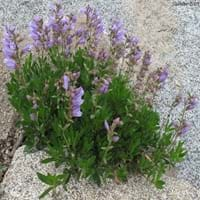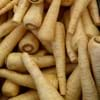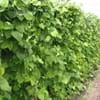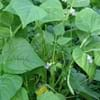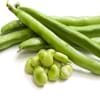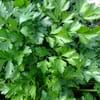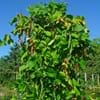What is
Life Span
Biennial and Perennial
Perennial
Type
Vegetable
Perennial, Shrub
Origin
Europe, Western Asia
Northwestern United States, Canada
Types
Not Available
sharpleaf penstemon, white-margined beardtongue, lowland beardtongue
Number of Varieties
Not Available
78
99+
Habitat
waste ground, wastelands
foothill woods, High elevation, Open areas, Rocky areas
USDA Hardiness Zone
4-9
4-9
AHS Heat Zone
7-1
9-1
Sunset Zone
A1, A2, A3, H1, H2, 1a, 1b, 2a, 2b, 3a, 3b, 4, 5, 6, 7, 8, 9, 10, 11, 12, 13, 14, 15, 16, 17, 18, 19, 20, 21, 22, 23, 24
1a, 1b, 2a, 2b, 3a, 3b, 4, 5, 6, 7, 14, 15
Habit
Rosette/Stemless
Mat-forming
Information
Plant Size
Minimum Height
15.20 cm
99+
45.72 cm
99+
Minimum Width
7.60 cm
99+
40.64 cm
99+
Plant Color
Flower Color
Yellow
Purple
Flower Color Modifier
Bicolor
Bicolor
Fruit Color
Brown, Black
Brown
Leaf Color in Spring
Green
Dark Green
Leaf Color in Summer
Green
Dark Green
Leaf Color in Fall
Green
Dark Green
Leaf Color in Winter
Not Available
Dark Green
Shape
Leaf Shape
Pinnate
Narrow and lance shape
Thorns
No
No
Season
Plant Season
Summer
Spring, Summer, Fall, Winter
Growing Conditions
Sunlight
Full Sun
Full Sun, Partial Sun
Growth Rate
Medium
Slow
Type of Soil
Loam
Loam, Sand
The pH of Soil
Neutral
Acidic, Neutral
Soil Drainage
Well drained
Well drained
Bloom Time
Summer
Late Spring, Early Summer
Repeat Bloomer
No
No
Tolerances
Drought
Drought
Care
Where to Plant?
Ground, Pot
Ground
How to Plant?
Seedlings
Seedlings
Plant Maintenance
Medium
Medium
Watering Plants
Watering Requirements
Average Water Needs, Do Not over Water, Keep the ground moist but not water-logged
Needs less watering, Requires regular watering, Water occasionally
In Summer
Lots of watering
Lots of watering
In Spring
Moderate
Moderate
In Winter
Average Water
Average Water
Soil
Soil pH
Neutral
Acidic, Neutral
Soil Type
Loam
Loam, Sand
Soil Drainage Capacity
Well drained
Well drained
Sun Exposure
Full Sun
Full Sun, Partial Sun
Pruning
Remove damaged leaves, Remove dead branches, Remove dead leaves
Remove damaged leaves, Remove dead branches, Remove dead leaves
Fertilizers
All-Purpose Liquid Fertilizer
All-Purpose Liquid Fertilizer
Pests and Diseases
Aphids, Armyworm, Cutworms, Downy mildew, Pitch canker, Red blotch
Red blotch
Plant Tolerance
Drought
Drought
Facts
Flowers
Showy
Showy
Flower Petal Number
Not Available
Single
Fruits
Showy Fruit
No
No
Edible Fruit
No
No
Fragrance
Fragrant Flower
No
No
Fragrant Fruit
No
No
Fragrant Leaf
Yes
No
Fragrant Bark/Stem
Yes
No
Showy Foliage
No
No
Showy Bark
No
No
Foliage Texture
Fine
Fine
Foliage Sheen
Matte
Glossy
Evergreen
No
No
Invasive
No
No
Self-Sowing
Yes
No
Attracts
Butterflies
Hummingbirds, Butterflies
Allergy
Stomach burn
Asthma, Pollen
Benefits
Uses
Aesthetic Uses
Not Available
Cottage Garden, Showy Purposes
Beauty Benefits
Blood purifying, Good for skin
Not Available
Edible Uses
Yes
Yes
Environmental Uses
Air purification
Air purification, Wildlife
Plant Benefits
Medicinal Uses
Aphrodisiac
Recovering internal injuries, Wounds
Part of Plant Used
Root
Flowers
Other Uses
Food for animals, Used as a nutritious food item
Container, Used as Ornamental plant, Veterinarian uses
Used As Indoor Plant
Yes
No
Used As Outdoor Plant
Yes
Yes
Garden Design
Edible, Herb, Vegetable
Alpine, Container, Mixed Border, Rock Garden / Wall, Wildflower
Scientific Name
Botanical Name
PASTINACA sativa
PENSTEMON fruticosus 'Purple Haze'
Common Name
Parsnip
Bush Penstemon, Shrubby Penstemon
In Hindi
चुकंदर
Bush Penstemon
In German
Pastinake
Bush Penstemon
In French
Panais
Bush Penstemon
In Spanish
Chirivía
Bush Penstemon
In Greek
Είδος δαυκίου
Μπους Penstemon
In Portuguese
cherivia
Bush, Penstemon
In Polish
Pasternak
Bush Penstemon
In Latin
parsnip
Persicaria Bush
Classification
Kingdom
Plantae
Plantae
Phylum
Magnoliophyta
Magnoliophyta
Class
Magnoliopsida
Magnoliopsida
Order
Apiales
Scrophulariales
Family
Apiaceae
Scrophulariaceae
Genus
Abelia
Penstemon
Clade
Angiosperms, Asterids, Eudicots
Angiosperms, Asterids, Eudicots
Tribe
Not Available
Not Available
Subfamily
Not Available
Not Available
Number of Species
Not Available
250
99+
|
||
|
||
|

